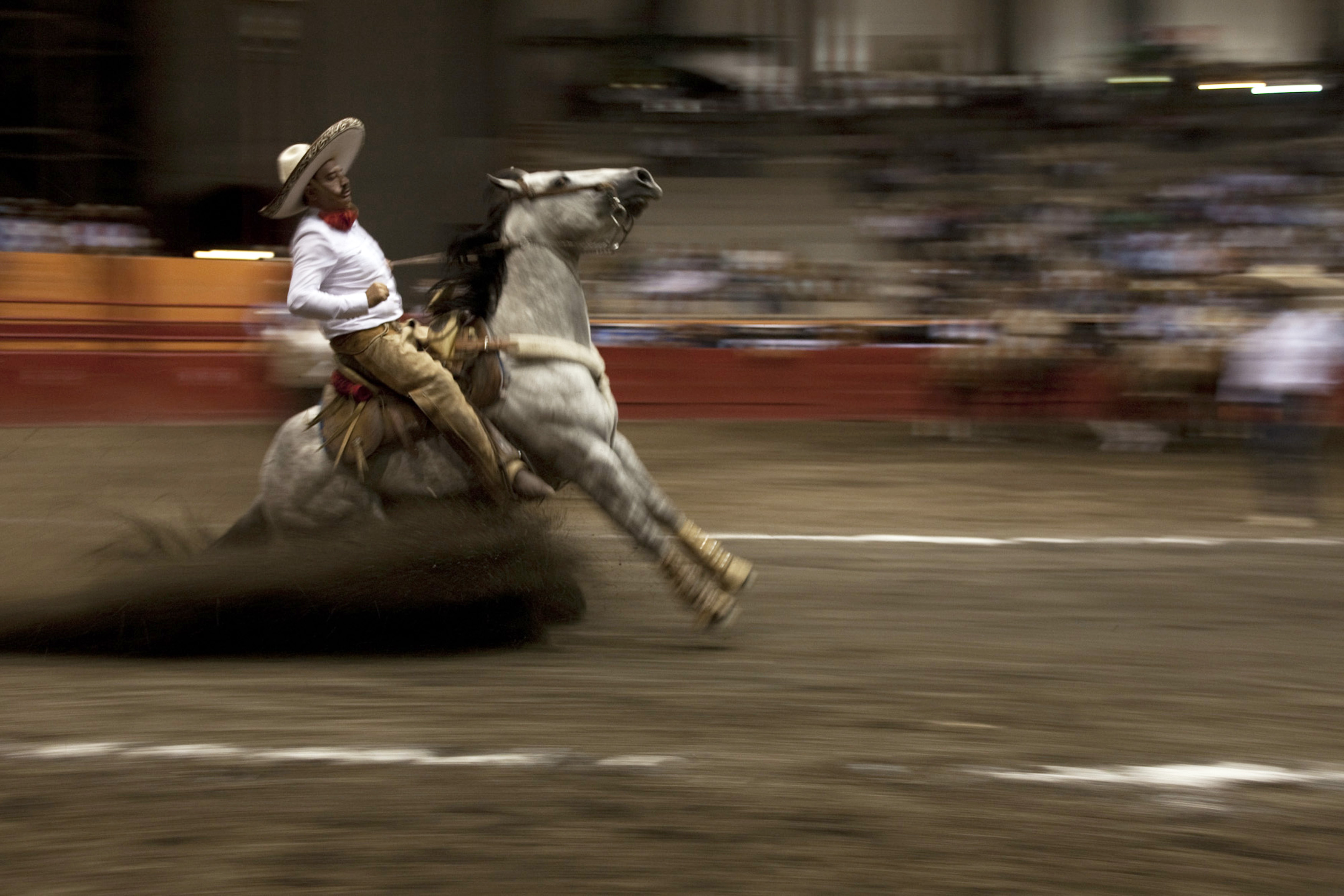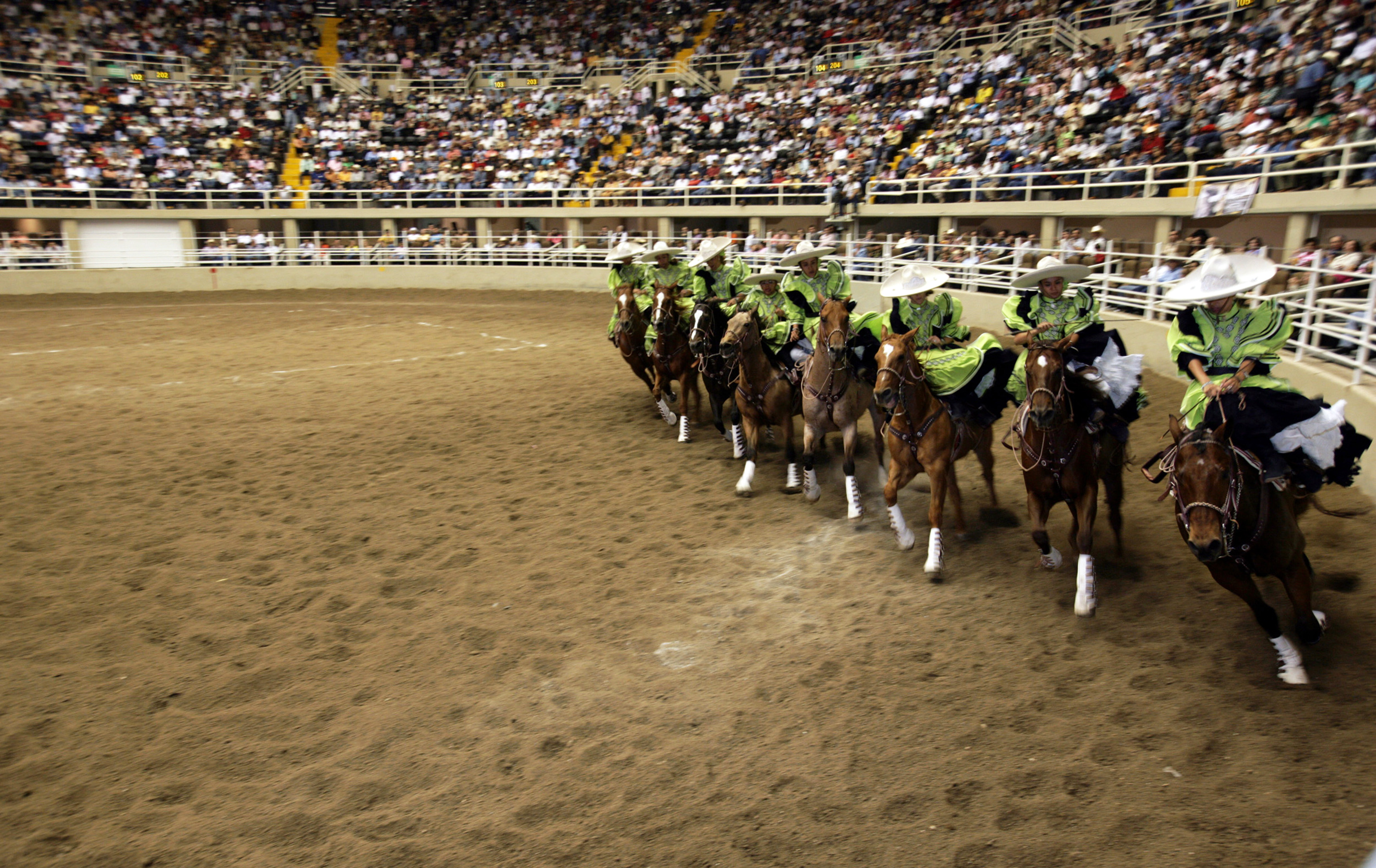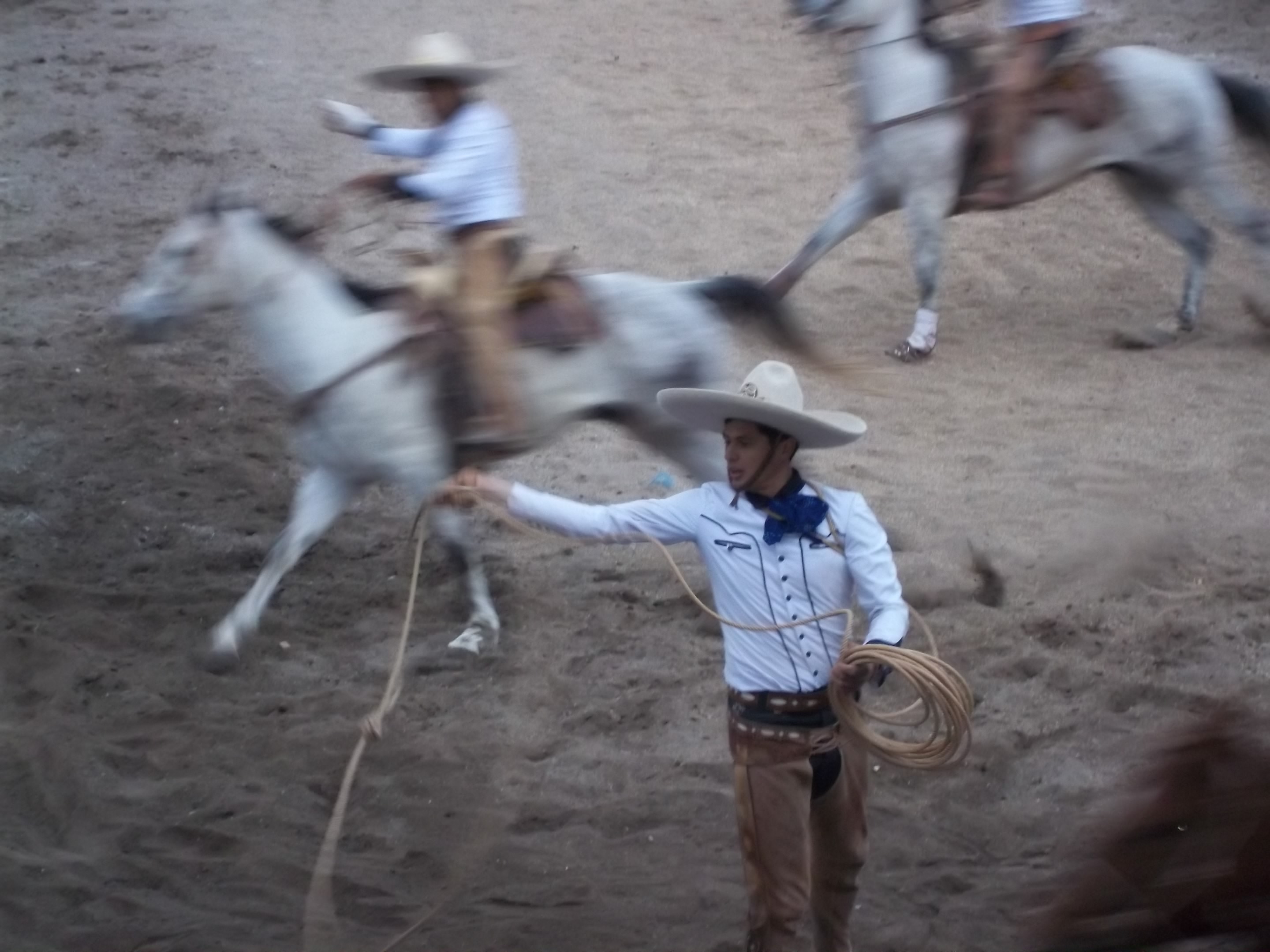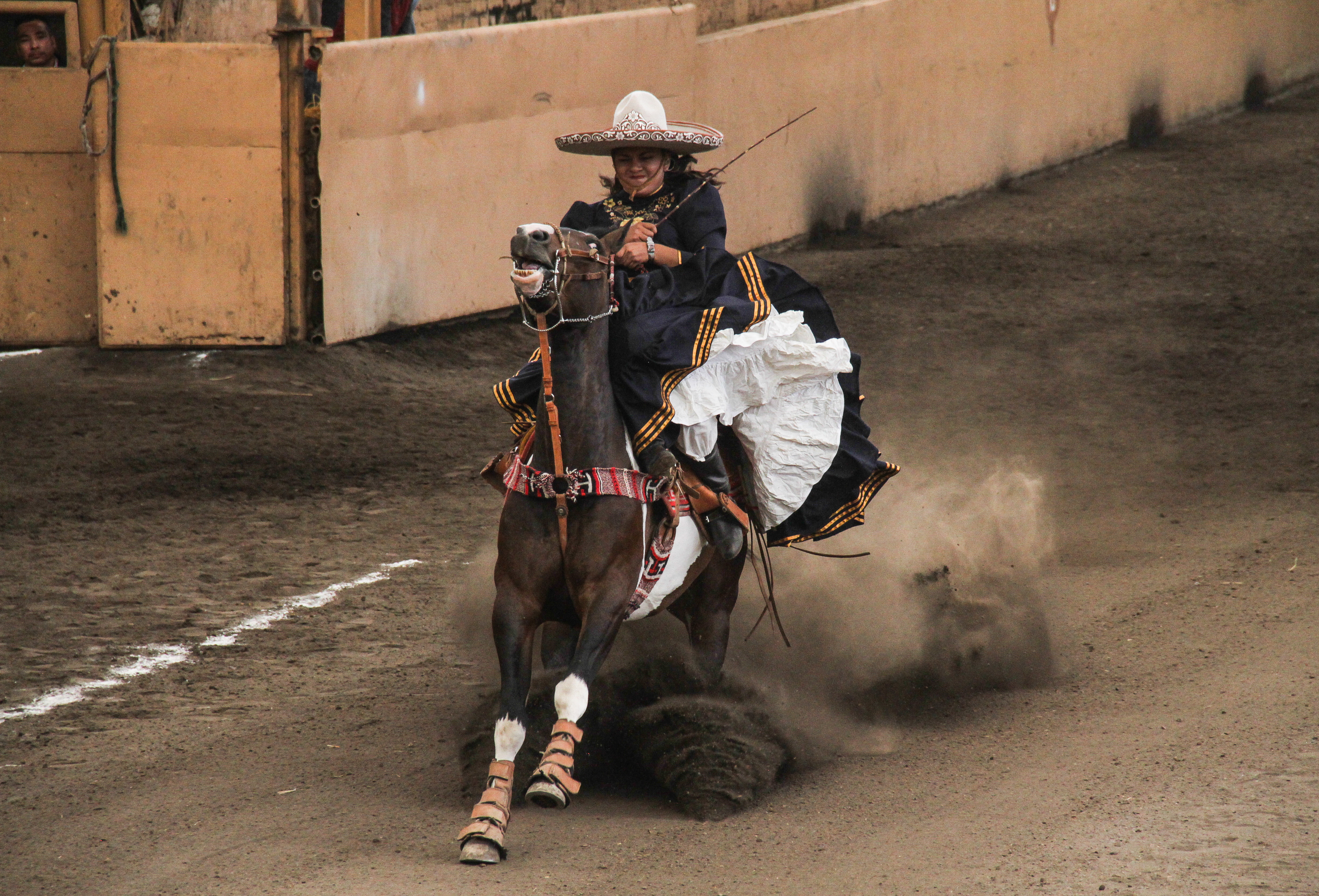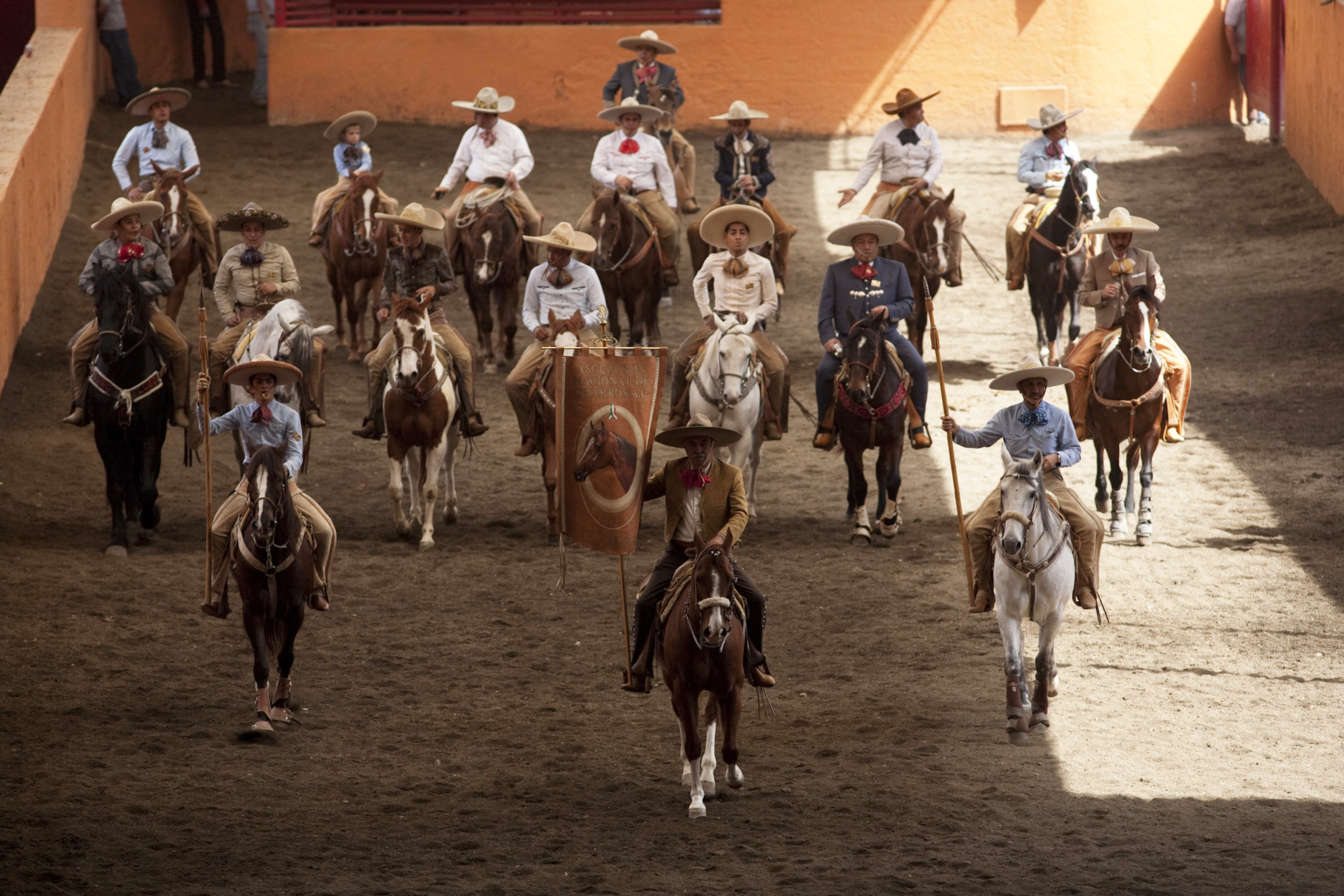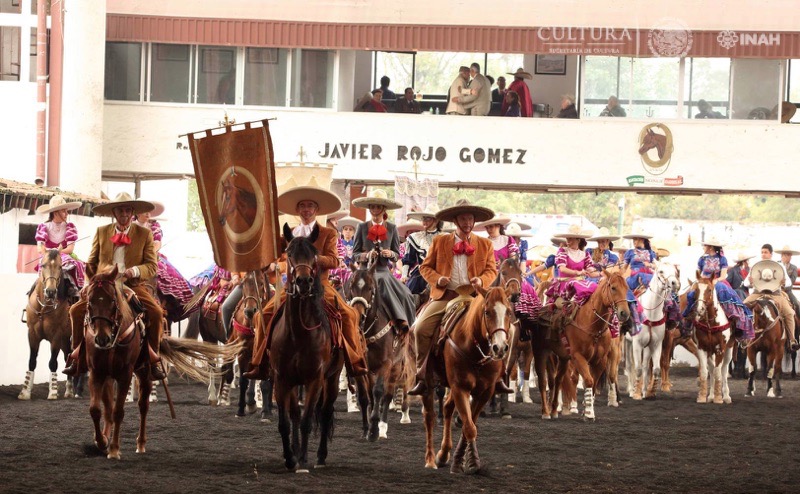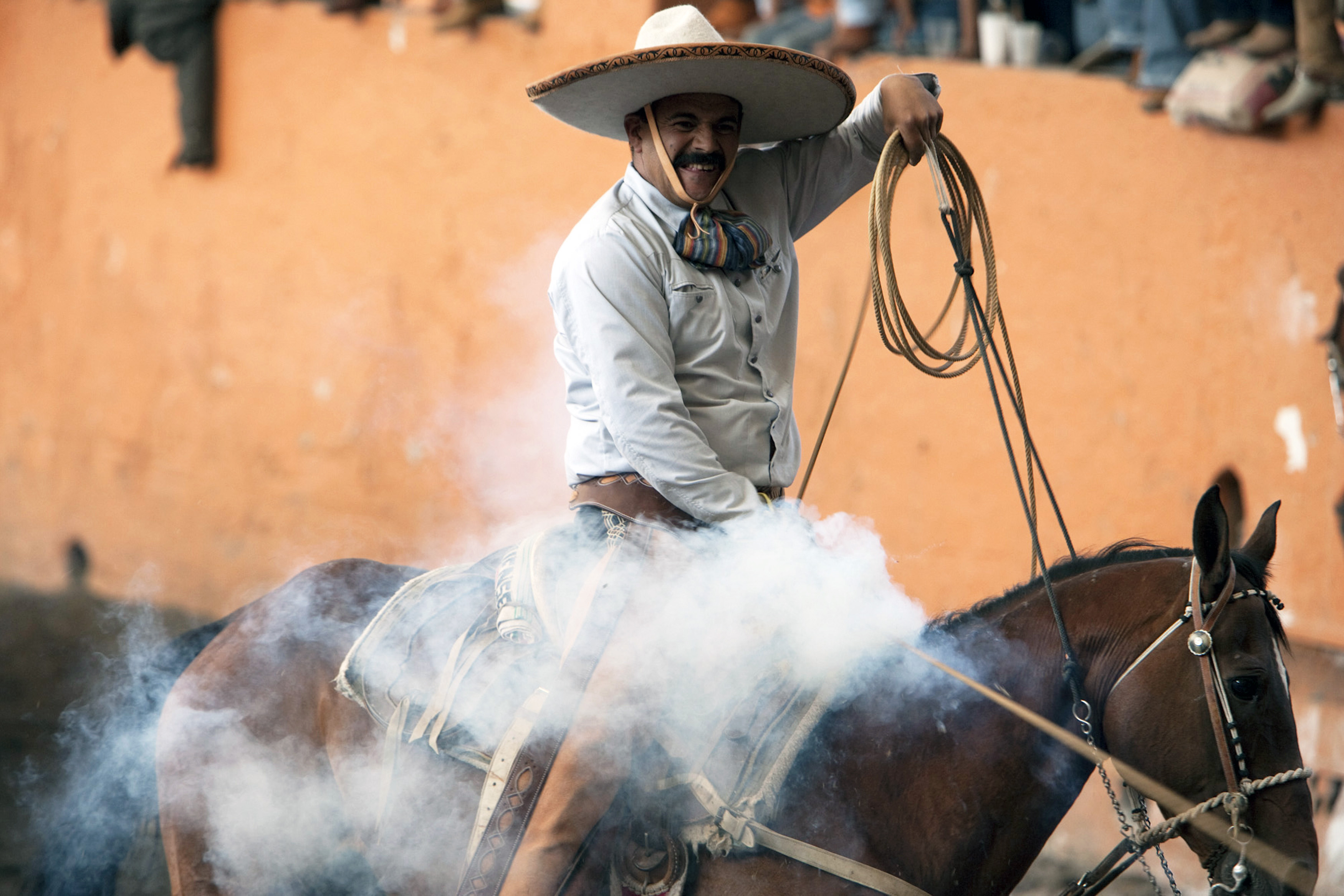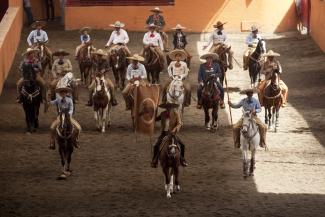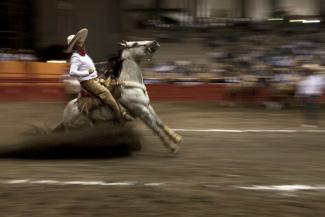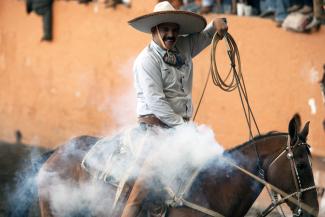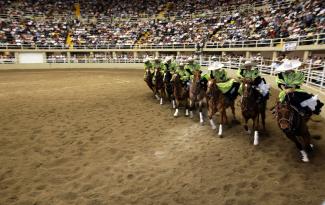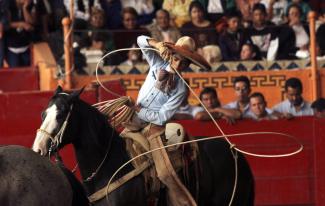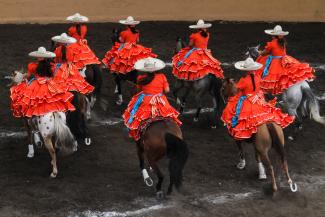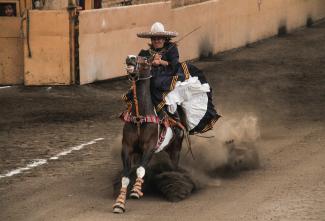La charrería, tradición ecuestre en México
La charrería, tradición ecuestre en México

World Heritage
Intangible
Tradiciones y expresiones orales
Its origins date back to the 16th century when cattle ranches in the north and center of the country, due to their rapid development, found it necessary for the cowboys of the region to work together and cooperate in order to keep track of the cattle on each property. This gave rise to the activity of charrería, which consisted of the typical activities of a ranch (exercising control on horseback using a saddle and a rope to herd the cattle), activities that over the years gave rise to a tradition.
Charrería is a traditional practice that emerged among Mexico's cattle-raising communities in the 16th century. Initially, it was used to facilitate coexistence among the herders who managed cattle on different ranches. Later, the techniques were passed down to younger generations within families, and over time, charrería moved from the countryside to the city. Since then, it has become widely popular, allowing it to grow by reaching large populations.
Today, charrería associations and schools created specifically for this purpose contribute to the ongoing transmission of the tradition, also considered a sport, by training community members, even to the level of competition. Public performances of various categories of charrería (charreadas) offer spectators the opportunity to observe herding skills, such as lassoing and controlling wild mares and bulls.
Trained cowboys demonstrate their skills on foot or on horseback, dressed in traditional costumes that include a wide-brimmed hat for charros and a colorful shawl for charras. The costumes, as well as the equipment needed for the practice, such as saddles and spurs, are designed and produced by local artisans, constituting additional components of the traditional practice.
Charrería is considered an important aspect of the identity of the communities of bearers and their cultural heritage. Practitioners also see the tradition as a way to transmit important social values, such as respect and equality among people in the community, to younger generations. It is presented in various Lienzos Charros and Rodeos, both in Mexico City and in the interior of the country. In these spaces, training sessions, competitions, and public charreadas are held, in which the traditional nine events are performed, demonstrating the skill of the charro.
The 9 Skills of Charrería
- Horse Breeding
- Piales en el Lienzo (Lassoing on the Canvas)
- Coleadero (Bull Riding)
- Bull Riding
- Terna en el Ruedo (Bull Riding)
- Mare Riding
- (Lassoing on Foot
- Lassoing on Horseback
- Death Pass
Charro clothing
The charro is distinguished by his traditional costume, which includes:
- Wide-brimmed hat (Andalusian, “De piloncillo,” 4 Pedradas)
- Chaps
- One-piece boot
- Piteado, calado, or cincelado belts
- “Pachuqueña”
Types of costumes:
- Work
- Half Gala
- Gala
- Etiquette
They are complemented with lechuguilla or ixtle ropes, the best of which come from San Miguel Cuautitlán, Jalisco.
The Horse in Charrería
Common breeds:
- Creole
- Quarter Horse
Chair used: Saddle
Women in Charrería: The Escaramuza
The skirmish is the female participation, and their attire includes:
- Adelita, China Poblana, or Charra dress (suede)
- Rebozo (X-shaped or long)
- Charro hat with four stones
- Calzonera
- One-piece ankle boots
Origins of the Charro Costume
It comes from the chinacos, guerrilla fighters who fought in the War of Intervention in 1847. Later, during the Empire of Maximilian, influences from English riding and traditional Mexican dress were mixed together. The first recognized charro was Ponciano Díaz Salinas, cousin of Porfirio Díaz.
Declaratoria UNESCO

Patrimonio Intangible
Categioría Tradiciones y expresiones orales
Fecha 2016
Criterios de valor Universal Excepcional
Este lugar cumple con los siguientes criterios de valor Universal Excepcional
R.1
El elemento es patrimonio cultural inmaterial, en el sentido del Artículo 2 de la Convención.
R.2
La inscripción del elemento contribuirá a dar a conocer el patrimonio cultural inmaterial, a lograr que se tome conciencia de su importancia y a propiciar el diálogo, poniendo así de manifiesto la diversidad cultural a escala mundial y dando testimonio de la creatividad humana.
R.3
Se elaboran medidas de salvaguardia que podrían proteger y promover el elemento.
R.4
La propuesta de inscripción del elemento se ha presentado con la participación más amplia posible de la comunidad, el grupo o, si procede, los individuos interesados y con su consentimiento libre, previo e informado.
R.5
El elemento figura en un inventario del patrimonio cultural inmaterial presente en el(los) territorio(s) del(los) Estado(s) Parte(s) solicitante(s), de conformidad con los artículos 11 y 12 de la Convención.



